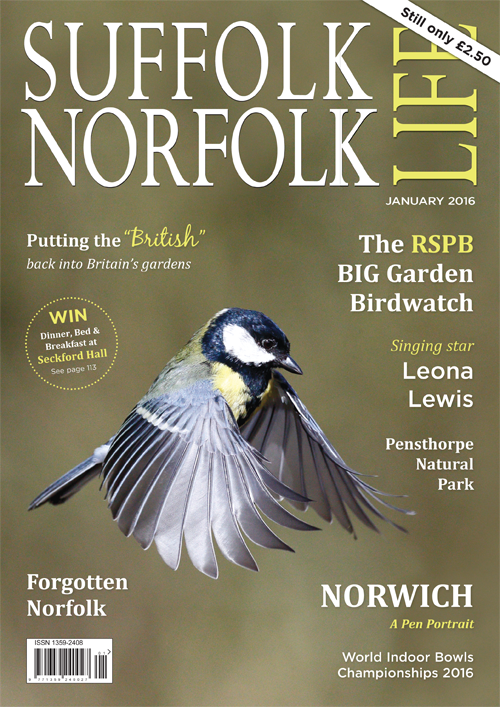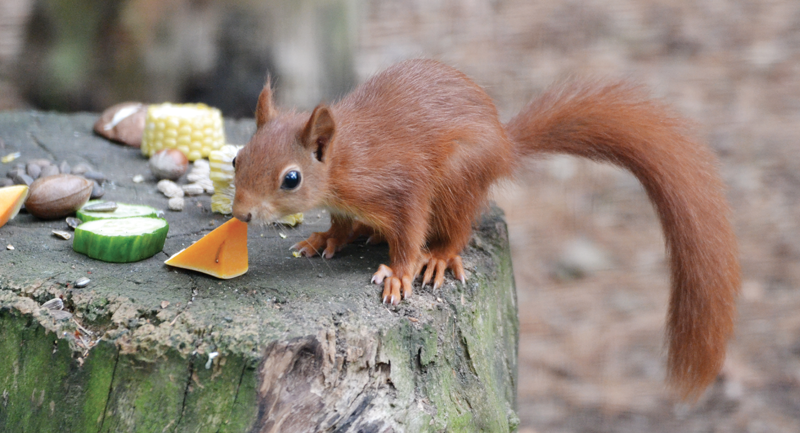- A feature from the January 2016 issue of Suffolk Norfolk Life magazine
 Click to view this issue »
Click to view this issue » - Category
- Nature, Places
Pensthorpe Natural Park in North Norfolk is no ordinary nature reserve…
Among the acres of tranquil wetlands, lagoons and reed beds, there are pockets of bustling wildlife, including species you’re unlikely to see at other wildlife havens.
Cranes from around the world, flamingos, red squirrels, and numerous rare species of wildfowl, flap their wings, exercise their vocal chords, and strut around, with their young in tow. Pensthorpe offers a unique experience, which combines a nature reserve with captive animals on breeding programmes.
Step out of the visitor centre onto the lakeside path and you’re instantly surrounded by colourful ducks of every variety – they’re easily pleased by a bag of seed. This is one of the best places in the UK to immerse yourself in the natural world, abundant with nature trails, bird hides and opportunities to see all manner of wild creatures – frogs, toads, birds, small mammals and deer if you’re lucky. The Park is actively involved in conservation programmes for a variety of rare and endangered species including red squirrels and cranes.
Wildlife Conservation
Eurasian cranes were once widespread in the UK, but hunting and drainage of their habitat made them extinct from the wild in Britain during the 16th century. Today, small populations of Eurasian cranes live in the Norfolk Broads and at a handful of other sites in England. A collaborative project to re-establish Eurasian cranes in the UK is now under way between the RSPB, Pensthorpe Conservation Trust, and The Wildfowl & Wetlands Trust. This ‘Great Crane Project’ has resulted in 93 Eurasian cranes being released to live wild on the Somerset Levels and Moors. The birds breed when they reach four or five years of age, and you can see breeding pairs at Pensthorpe, with their chicks.
Beyond the enclosures housing cranes and flamingos, there are woodland glades, reed beds and rushes, pools and lakes, all abundant with wildlife. In the spring, many of the wildfowl are caring for their young and you may see baby moorhens, goslings, and ducklings

